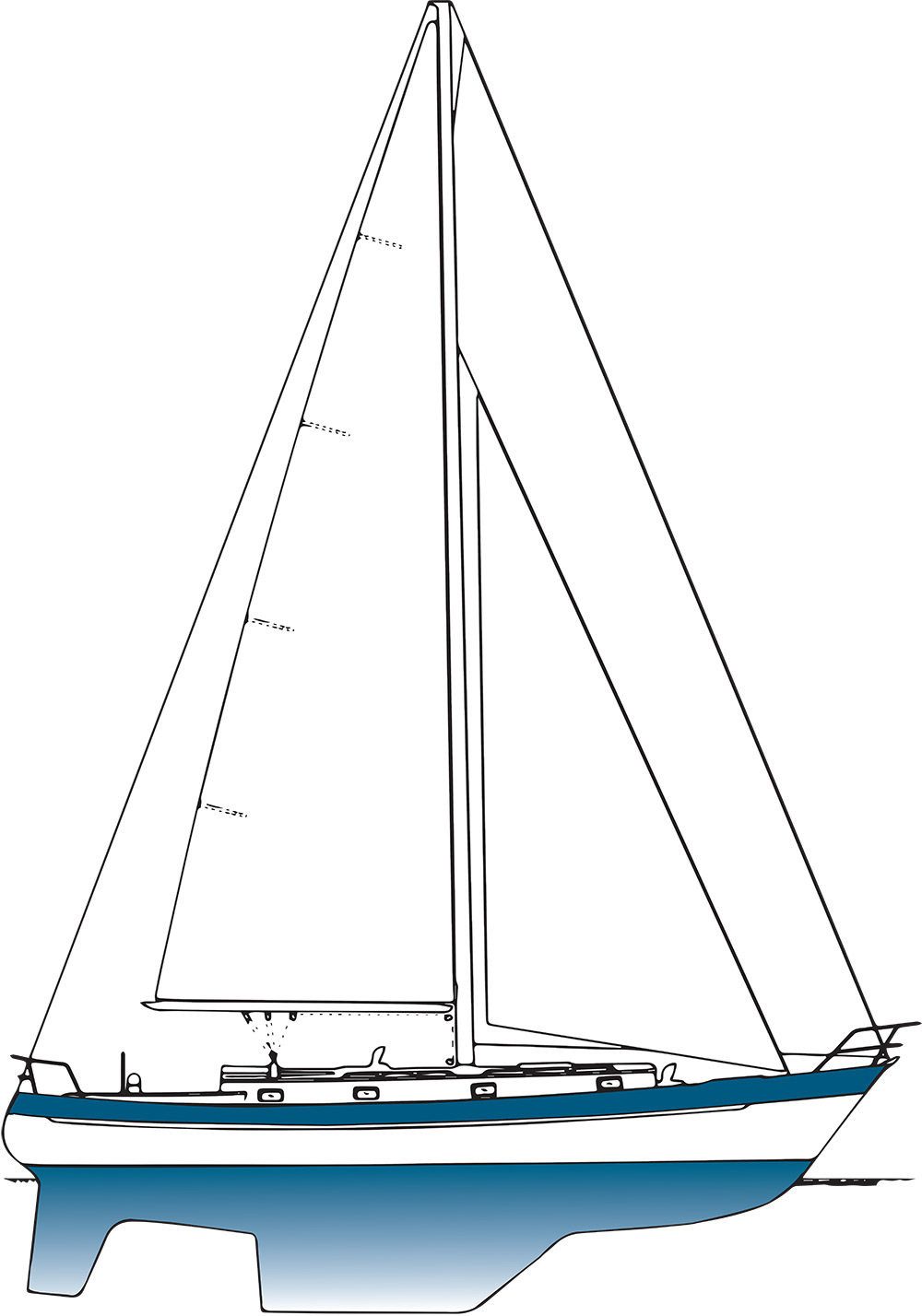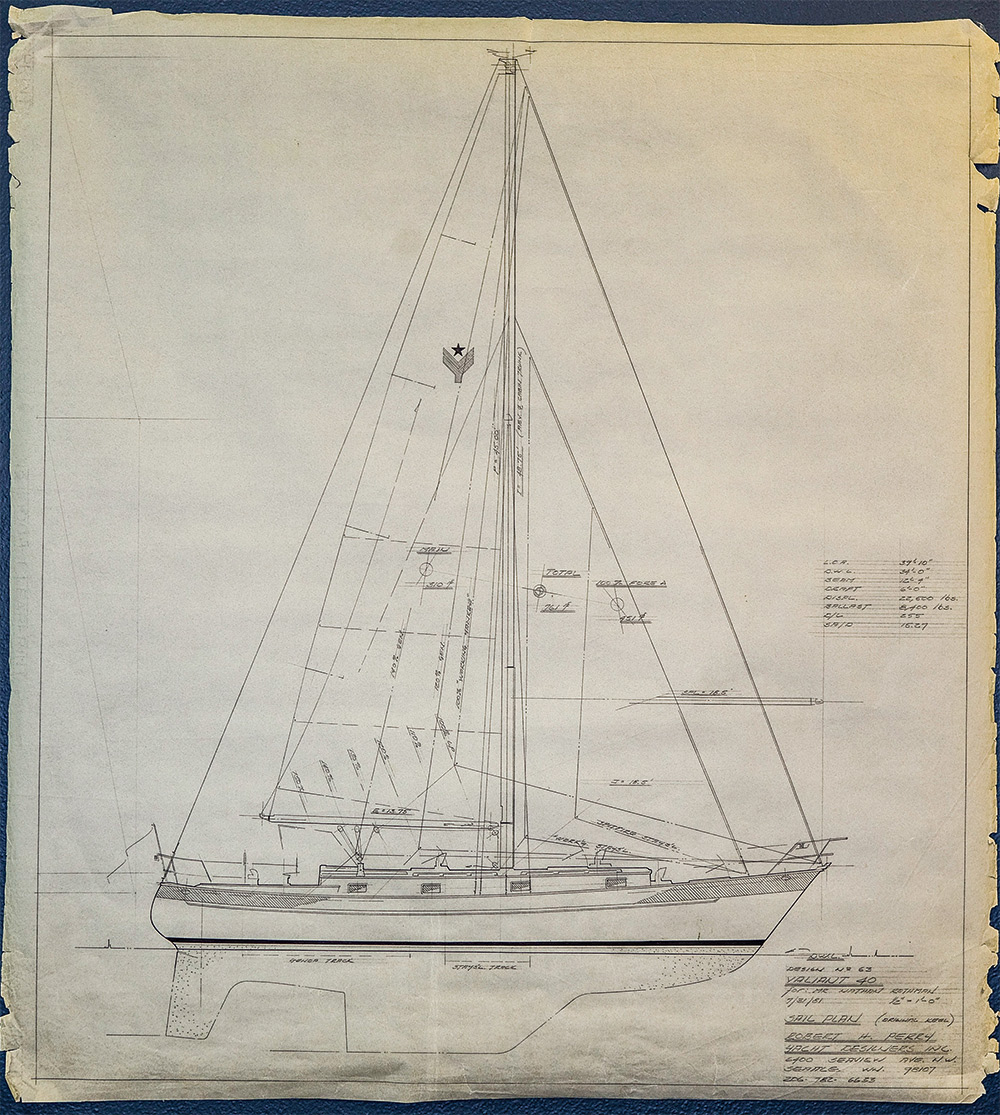Valiant 40
The performance cruiser that defined the category and sparked a career
Editor's note: This Perry on Design review is part of a special column featuring important designs from the last 50 years as part of SAILING Magazine's 50th anniversary celebration. Read more about Bob Perry's more than four decades as SAILING's technical editor here.

I chose the Valiant for the cruising category because it is generally considered the boat that began the move to “performance cruisers.” There were plenty of fast cruising boats before the Valiant but I think the Valiant is remembered for a couple of reasons. The term “performance cruiser” was attached to the V-40 early on and it became an easy way to identify the type. Also, the V-40 was a distinctive looking design that was very easy to recognize. People like what they know. And yes, I can’t deny it, I am the proud designer of the V-40. So with that in mind I will try to be objective.
It was 1973. Nathan Rothman and I were best friends. Neither one of us had any money and we were grubbing by working at various things. I had already designed the CT54 and I was very focused on making it on my own. Nathan had the idea of starting a boatbuilding company. I went along with the dream and started working on a design. My design would combine hull elements of the racing boats of the day blended with a cruising interior and rig. I did not innovate anything. I took features I liked from other boats: the stern from K. Aage Nielsen’s Holger Danske, the midsection from Dick Carter’s Airmail and various elements from the work of my old friend Bill Garden.
I was working at Dick Carter’s office when I finished the hull lines to the Valiant and I brought them to work to show my coworkers Yves-Marie Tanton and Chuck Paine. They scratched their heads and one of them said, “Do you really think a boat should be shaped like that?” I don’t recall my answer. I think my answer was my drawing. Yes I did. Many years later I ran into Dick Carter at the Annapolis boat show and he said,“You were right.”
In the days when “cruising boat” almost certainly meant “slow boat” I gave the Valiant 40 performance that would bring it more in line with the current racing fleet. I chose a D/L of 255. One well-known designer writing in Yachting magazine said, “The V-40 is too light to be considered a serious offshore boat.” He should have told Mark Schraeder before Mark sailed his solo, nonstop, circumnavigation in a Valiant.
Today the V-40 would be considered “heavy.” I chose a midsection from a fast IOR boat and drew in the buttocks as flat as I could using the accepted at the time IOR “bustle” feature aft then tucking up the buttocks at the last moment for a shapely canoe stern. We called it the “tumblehome canoe stern.” My intention was to pull volume aft and avoid the pinched in shape you would commonly see on almost all double-enders. It was a shape I had seen on several Scandinavian double-enders and I really liked the look. I did have to fight a bit to convince a lot of cruisers that a fin keel and a skeg hung rudder were a huge improvement over a full keel. I’m still arguing that one. I find the Valiant 40 a very satisfying boat to sail.

The layout of the V-40 was very practical. Later on the factory in Texas would have me schmooze up the layout with “trendy” features but I always preferred my original layout. It was orthogonal but it worked. It had pilot berths port and starboard and a double quarterberth. My wife never liked sleeping in that berth. She felt trapped, shoved outboard under the side deck. The galley was big and that would soon become a trademark of most Perry designs. Today I can’t think of anything I’d change in that layout.
My choice of a cutter rig came from the need to make a weatherly boat with the ability to make sail reduction easy. The ketch rig was considered the go-to rig for cruisers at the time. The Valiant could be sailed as a cutter or a sloop. I made a change in the E dimension to help balance the helm a bit better and also to get the mainsheet traveler off the stern and up onto the cabintrunk.

The build story of the Valiant is complicated. There was the fire retardant resin problem early on. Production eventually moved to Gordonville, Texas. My old buddy Rich Worstell built many more Valiants, adding a bowsprit and calling the boat the Valiant 42, but the hull is the same. Production continued for more than 35 years, earning the V-40 a place in the American Sailboat Hall of Fame.
Looking back I am thankful to Nathan for giving me the chance to design the Valiant. Being as objective as I can be I’ll say that the V-40 will long be remembered as a great cruising boat and the boat that launched my career.
LOA 39’10”; LWL 34’; Beam 12’4”; Draft 6’; Displ. 24,000 lbs.; Ballast 8,400 lbs.; Sail area 810 sq. ft.; SA/D 15.5; D/L 255 L/B 3.24; Auxiliary Perkins 4 108; Fuel 80 gal.; Water 125 gal.; First built 1973; Originally reviewed February 1975
Read Perry's other picks for the four most influential designs of the past 50 years here:

Comments